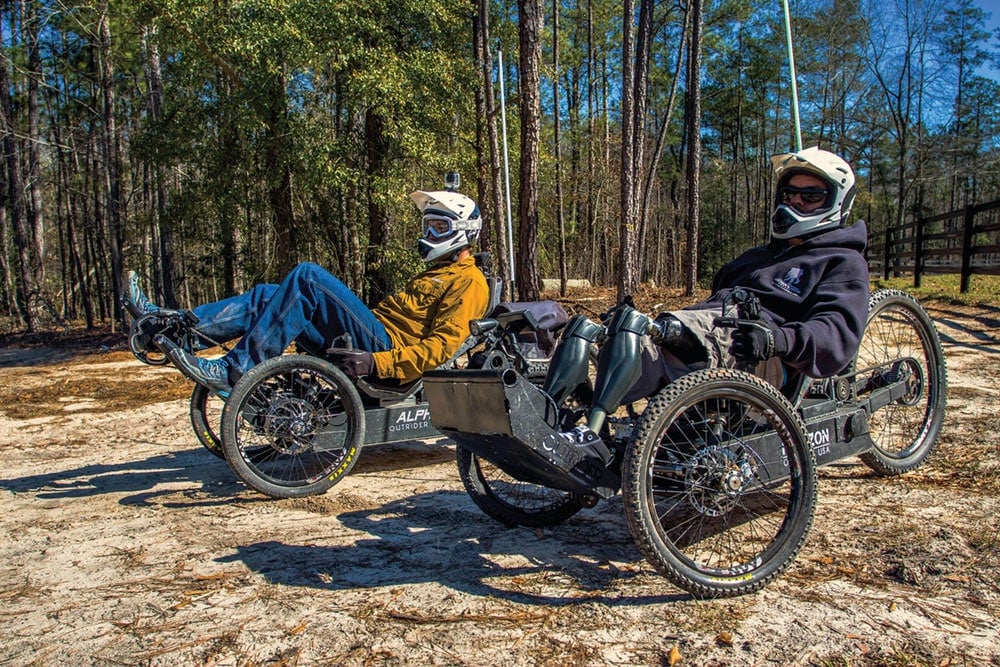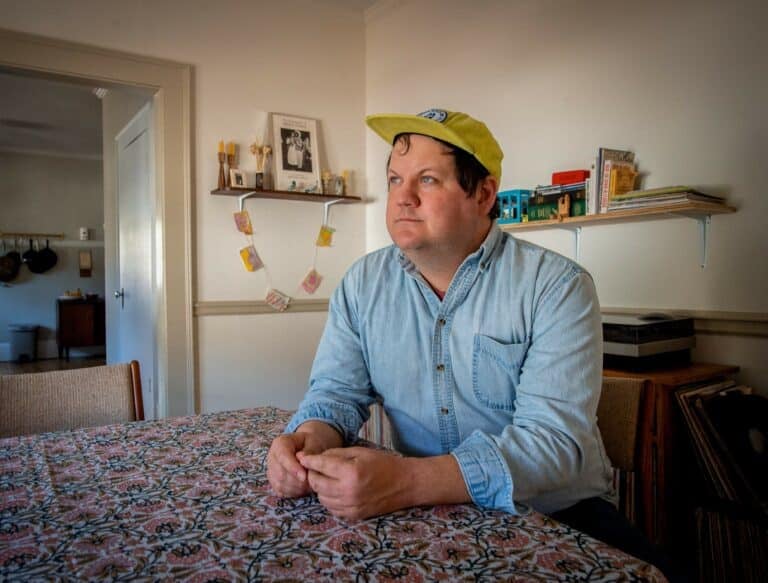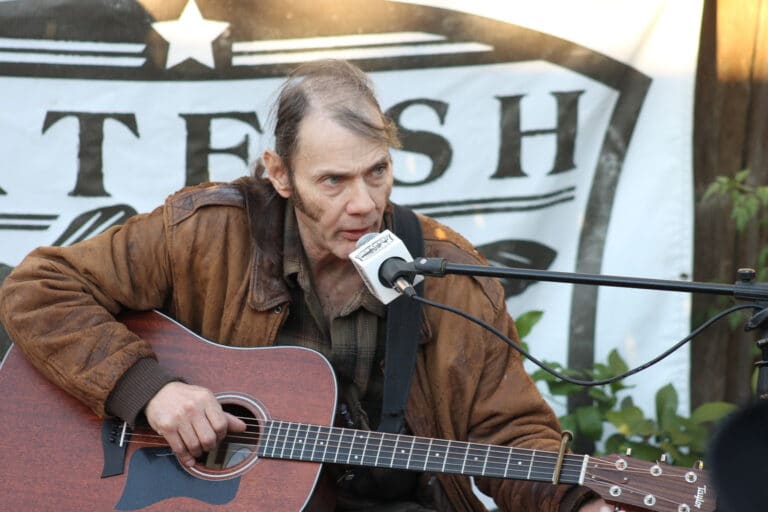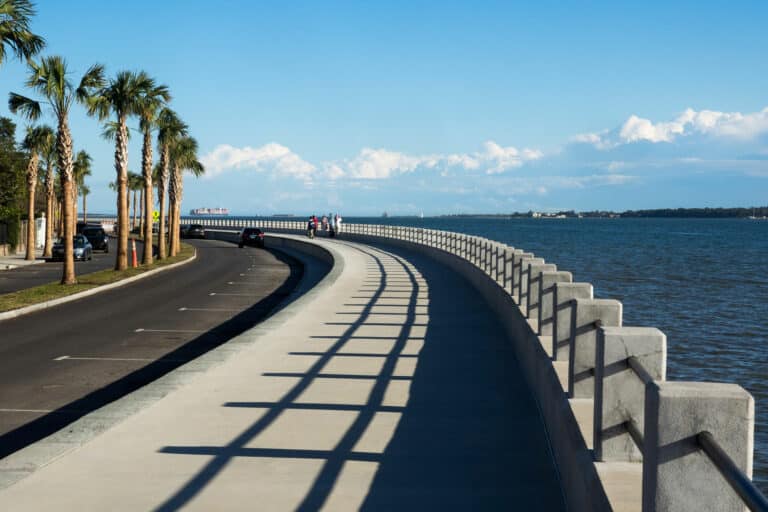Rocking and rolling down the Gauley River, the Handi-Craft takes on raging class V rapids like the infamous Pillow Rock with a power unseen in most traditional commercial rafts. Designed to self-right when flipped over, the Handi-Craft adaptive whitewater outfitting system was born from a collaboration between Eric Thompson and Creature Crafts after a car accident in 2012 left Thompson paralyzed from the mid-chest down. While still in the hospital, Thompson, a long-time raft guide, ski patroller, and wilderness EMT, started thinking about ways he could get back to running whitewater. Due to the placement of his injury, he has limited core control of the muscles below his chest. “Everything that’s good about a kayak really doesn’t help you if you can’t control it with your hips,” he said. So he started tinkering with rafting equipment, trying to figure out how to maximize his abilities and minimize his deficits. The key was to stabilize his core, much like a backrest on a wheelchair, without trapping himself in a craft that could flip upside down.
Thompson rigged an oaring system to his Cataract raft that allowed him to paddle down calmer waters, but he still wanted to run the larger class IV and Vs he was used to on the Gauley and New Rivers, including finding a way to reflip the boat without the ability to jump on top and pull it back down.
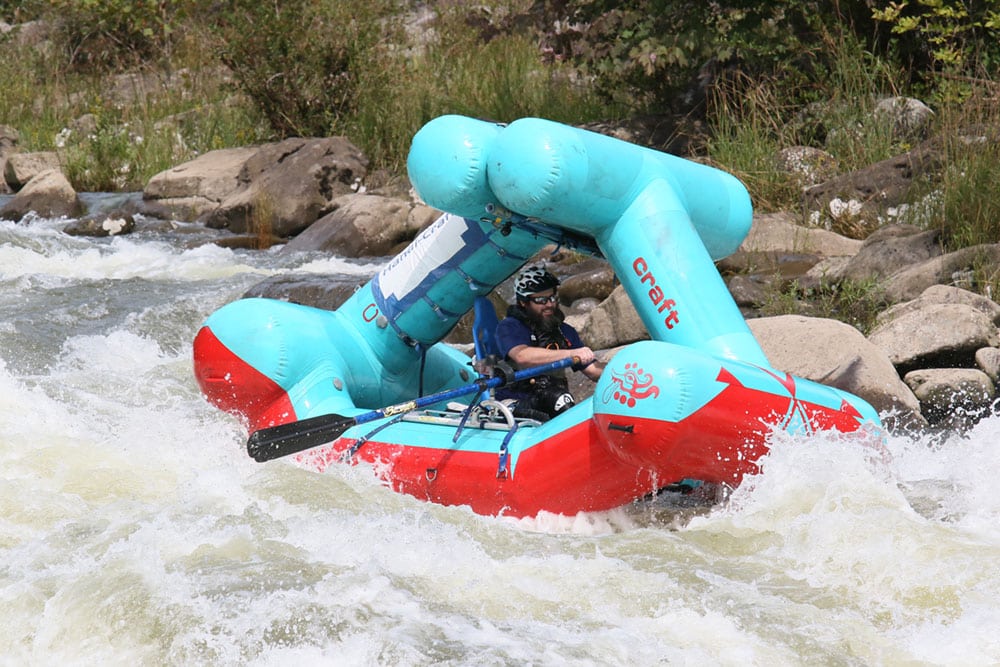
When he looked around at what other raft companies and adaptive programs were doing, Thompson realized his system was already better than anything else out there. Nearly all of the raft trips for adaptive users were floating beginner sections of the river. “Mostly what they were doing was, at best, taking nice lawn chairs and strapping it on top of the raft,” Thompson said.
That’s when Thompson connected with the team at Creature Craft, which had developed an inflatable raft that had success in making safer low-head dam rescues. Combining his oaring system with Creature Craft’s self-righting system and a release mechanism similar to what’s seen in swift water rescues, Thompson soon started running rapids larger than what he previously ran commercially before the accident.
Now, the equipment to get adaptive users down whitewater is here and ready to go. “Instead of being, at best, cargo on the intermediate section, you can now either oar completely independently or you can participate with a guide,” Thompson said. With a boat that works, he’s focused on getting the equipment out to people and getting them down to the riverside.
In addition to his outdoor pursuits, Thompson runs Access on the Go to help companies and agencies evaluate their services and make them more accessible. He’s found that many commercial companies are unaware that under the Americans Disability Act, they are eligible to receive $20,000 annually in tax credits and deductions for equipment and improvements to increase equal opportunity to services like investing in a Handi-Craft system for potential customers.
And accessibility impediments aren’t just on the water. Even with the proper boats, users often face river put-ins and parking lots that are not ADA accessible. Then there’s the issue of being able to go into town for a meal at the end of the day or find lodging for the night. “If I drive by your restaurant and you have a set of steps out front, no ramp, and no parking, it’s almost like a big middle finger on your front door saying you’re not welcome,” Thompson said. It’s not that there’s a lack of demand for these services, he added. Rather, it’s a lack of businesses and destinations offering it.
That’s something always on Tommy Ausherman’s mind when he’s in the outdoors. “Anytime I’m out on a trail, I’m always thinking about what it would take to get someone with no leg and hand function from this spot where I’m at to that spot up there without any assistance from anyone else,” he said.
Ausherman’s interest in electric bikes started while attending Appalachian State University in Boone, N.C. Twice while riding his bike to class, he had close encounters with a truck passing and grazing him. In 2011, Ausherman started playing around with designs for a bike that could keep up with the flow of traffic, focusing on speed, ability to climb hills, and load range, before eventually adding a second wheel in front to enhance stability. But a few years after establishing Outrider USA in Fletcher, N.C., and manufacturing e-bikes for a niche market, Ausherman didn’t feel like they were making an impact in the way he had envisioned.
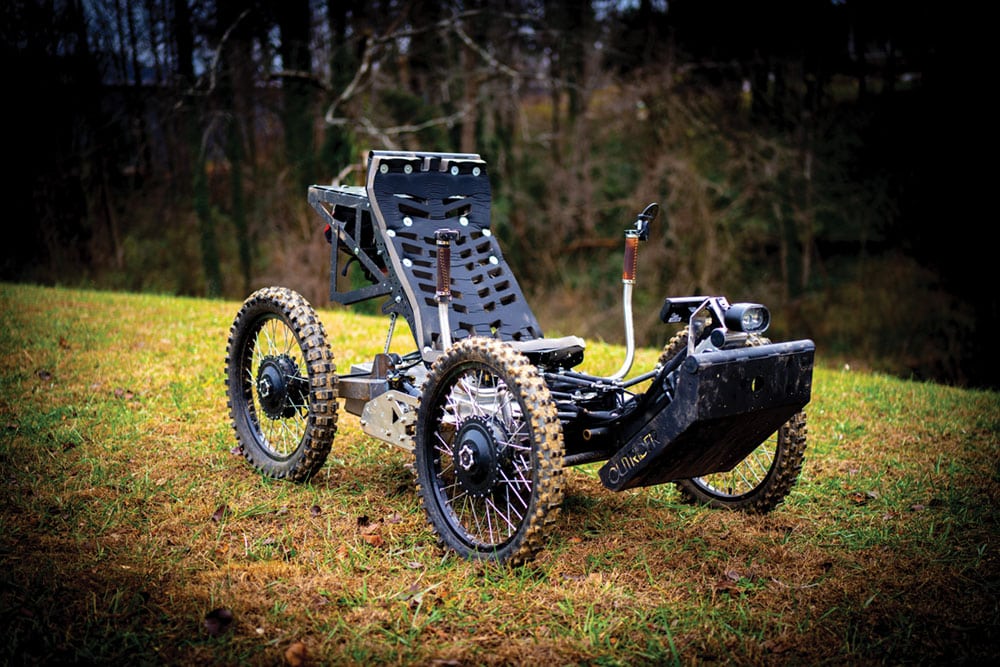
That’s when he got a call from Dr. Chris Wenner wanting to know if Outrider would be interested in helping design a bike for adaptive riders. “Twenty-five years after [Wenner had] broken his neck, he had this recurring dream where he’d gone into this bike shop and got just the right parts off the shelf to build a bike he could ride as a quadriplegic,” Ausherman said. But at the end of the dream, the bike never gets built. This was exactly the change in direction Ausherman had been hoping to find.
When it comes to designing adaptive bikes, Ausherman discovered that making up the power differential was the easy part with the addition of electric assist. Where the company spends most of its time is figuring out how to increase rider confidence and control over steering and braking, especially for riders whose upper bodies have been impacted.
Outrider offers a variety of control systems, including handcycles, foot pedals, single-sided controls, and Tri pin controls for riders with little-to-no hand function. “It’s pretty amazing how the human body adapts to be able to engage whatever muscles are there and able to contribute,” Ausherman said. Outrider allows riders to test machines before deciding on a purchase and will even recommend other manufacturers whose designs might be more suitable. In the future, they aim to create a headset that would allow riders to control the bike through head movement.
Despite advances in technology, the problem for many e-bike users, disabled or not, remains access to trails. While private trail systems like Ride Kanuga allow e-bikes, most public lands like Pisgah National Forest only allow them on routes designated for motorized use. Ausherman just wants to see others exploring the outdoors, so he remains focused on building low-impact rigs that will enable people of all abilities to enjoy the trails. “I really don’t want to be in the middle of the e-bike debate,” he said. “I really just want to give access back to people that are longing for it.”
Cover photo: Outrider USA builds a variety of e-bikes built for long days of riding. Photo courtesy of Outrider
